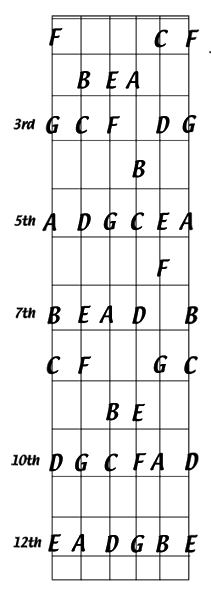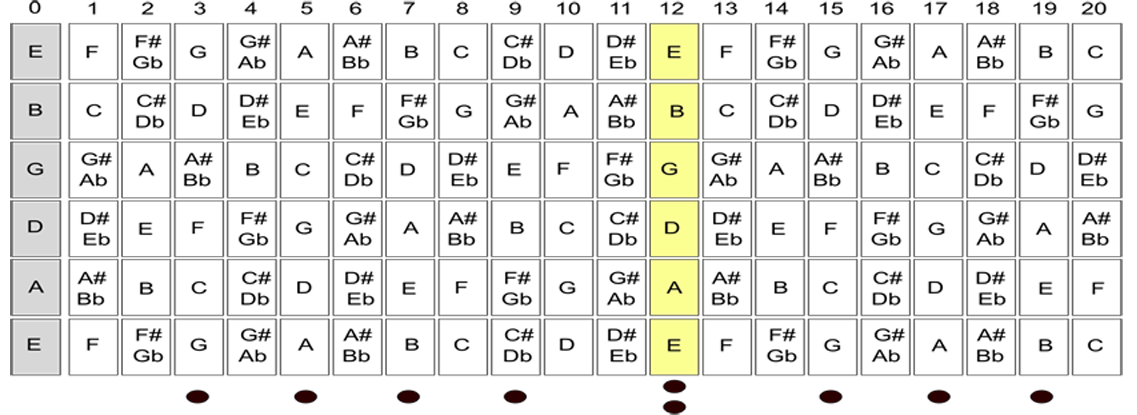How To Find The Notes On The Neck
Source:Internet Posted by:learnguitarsonline.com Date:2010-01-26 Click:
If you are really new to the guitar you might wish to skip this exercise for now and just use this page for reference if you need to know the name of a note.
Assuming you’re playing a regular 6-string guitar or 4-string bass, the 1st 4 open strings are the same. From low to high (thickest string to thinnest) these are:
E
A
D
G
then continuing on guitar:
B
E
This is a great exercise to learn where all the notes on the fingerboard are located. It is very useful to know this because it helps with finding chords and scales, moving licks to other parts of the neck and working out your own chord names. For the example below we will use the note C, but you should practice all the notes.
You will need to know your Note Circle too to make sure you know where the sharps and flats are!

Find A Note
Start by playing C on the 6th string (8th fret) then on the 5th string (3rd fret) then on 4th string (10th fret) and so on up to the 1st string and back down to the 6th. Then go on to the next note (F) and do the same thing.
Rules
1. Don’t play any notes open
2. Use the same finger to play all the notes.
3. Do it with a metronome.
4. Slowly build up the speed.
5. Suggested order: C, G, D, A, E, B, F
A good starting speed would be 40-60 bpm (one note per click), and a target speed would be 160 bpm.
Be careful to follow the rules closely so you spend your time learning the best way that you can.
As well as learning the notes it will help you jump around the fingerboard. Hint: use the dots, they can really help.
There are other exercises for learning this skill in my book Practical Music Theory, available from this very site, and a very worthy investment in the knowledge department - check out the reviews on the forum!

Keep in mind that the bass guitar is again the 4 lower strings only (E – A – D – G), so you can just ignore the B and high-E – unless you want to be able to tell your guitar player he’s playing the wrong note!
There are some tips and tricks for identifying notes on the neck which we’ll get into in future lessons, but I highly recommend memorizing the fretboard. Baby steps are the key – start with the low-E and when you feel you’ve got that wired, continue on to the A, etc. You can make a game of it too! Grab your guitar or bass and pick any fret at random and try to figure out as quickly as possible what note that is – then check your answer with the diagram. Or, if you’re super adventurous, make some flash cards writing the string and fret number on one side, and the corresponding note on the other! (i.e. the 10th fret on the G string is F, the 6th fret on the A string is E?, etc.)
If you are interested to learn how to play guitar, we definitely have to say that Jamplay is our top choice for online video guitar lessons. The quality of the lesson material is exceptional, the support is great and the price is affordable.Highly Recommended!
Prev:How to Use The Note Circle Next:How To Use Octaves for beginners
